In 2020, Sara Bennett explained the visual effects work for the Netflix film, The Old Guard. She’s back today to tell us about The Woman King with very different challenges.
How did you get involved on this show?
Having previously worked with the director Gina Prince Bythewood on The Old Guard she reached out to me about this project early on, and of course I said yes!
How was your collaboration with Director Gina Prince-Bythewood?
I really enjoyed collaborating with Gina. This was our second time working together, so we already had a relationship from the start. Gina’s understanding of visual effects from working together on The Old Guard made it a much more intuitive process. Gina was clear what she wanted from VFX and how we could get there using practical builds vs using CG for a lot of the environments to help achieve the scope the film needed to tell this epic story.
Did she want to do things differently with the visual effects after The Old Guard?
The Woman King tells an incredibly poignant and important story grounded in the history of 19th century West Africa, whereas The Old Guard is pure fiction/fantasy. Gina’s approach for The Woman King was anchored in reality so for example we didn’t go crazy on the blood and gore in the fight and battle scenes. Obviously, we added where it was needed for realism without it being overly gratuitous, but enough to make everything feel grounded.
How did you organise the work with your VFX Producer?
My VFX Producer was Claudia Dehmel. Claudia is a talented VFX Producer, and we worked closely throughout the project from prep through to post both bringing different experiences to the table to manage the show.
How did you choose the vendors and split the work amongst them?
We had a very broad range of VFX, from heavy simulations and CG builds for our world building and fight scenes, to extensive comp work and crucial invisible VFX work. We created around 800 visual effects shots over a tight period of 26 weeks for The Woman King. With such a short post schedule that had no wiggle room and with shot counts growing during post, we quickly realised we needed extra help to get through all the work. We had already booked in our vendors ahead of the shoot; Milk VFX were the main vendor with supporting work by Egg in Dublin and Host who came on board as our inhouse team. We then brought in additional vendors as we started to see the amount of work coming out of the director’s cut. We had extra help from Untold Studios, Jellyfish Pictures, Nexodus, Instinctual and a few extra inhouse people.
How was the collaboration with VFX Supervisors?
Milk’s VFX supervisors Andy Morley and David Sadler Coppard (who also oversaw Egg’s work) were a great combination and managed the split of work brilliantly. We had a lot of spinning plates to manage through an extremely tight deadline and they had the biggest challenges as main vendors.
Can you elaborate about the environment work?
The Woman King story is based on 19th century West Africa, so we needed key historical references to understand how this world looked. The production art department were amazing and provided invaluable reference material for the VFX environments seen throughout the film.
Creating the kingdom of Dahomey and the fierce and epic battles were some of the VFX team’s major tasks. We had to make sure we kept the realism and were careful not to take away from the beautiful sets and locations we were shooting in.
One of the key environments was the Dahomey Palace and the surrounding area where much of the action takes place. We had to sell the idea of a city of industry with the palace itself in the middle. The physical set gave the actors a 360 environment to perform in with VFX extending the palace and kingdom beyond the set both inside the palace gates in the courtyard scenes and high and wide shots outside its walls.
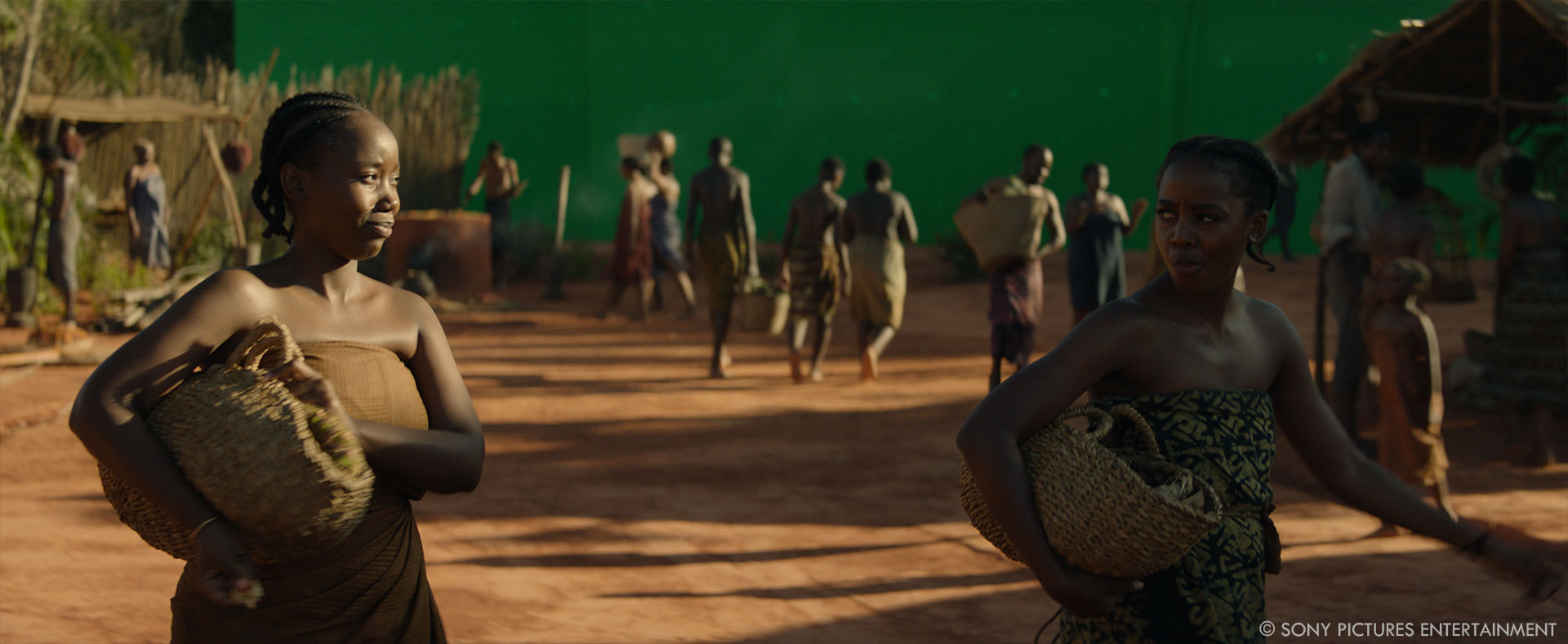
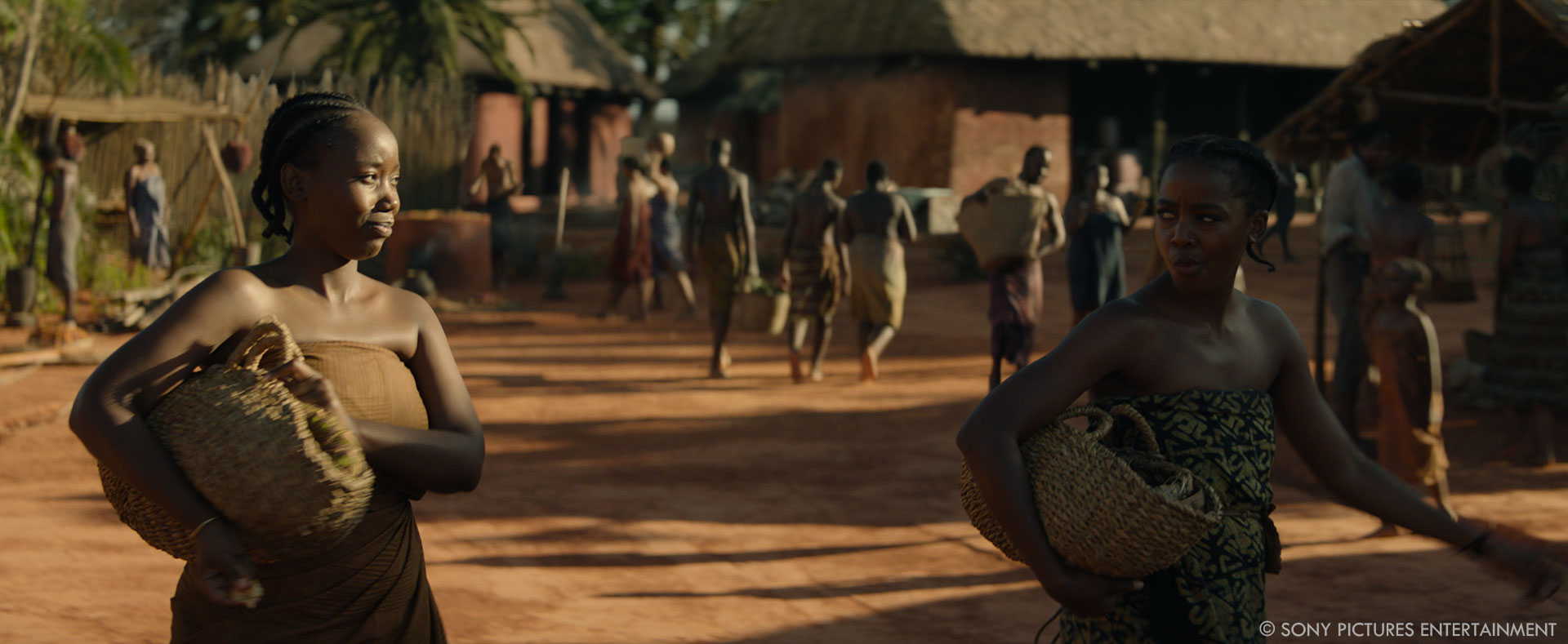
Did you use procedural tools for the jungle and the trees?
We used procedural scattering in Houdini for the layout and Speed Tree for the assets.
Which location was the most complicated to create?
The epic Oyo battle scene at the climax of the film was the most challenging sequence for VFX and was handled by Milk as the main vendor. It needed to feel epic, evoking a huge army of Oyo soldiers that our Agojie army had to defeat. We had to get the layouts and timings of this correct based on the progression of the story through the scene in a tight post turnaround.
During the recce we worked closely with the art department, stunt and sfx teams to figure out the layout and build for this scene as it was important to ascertain what area VFX would cover. In the location we chose for the shoot we broke down the action into three fields. Field one was where the main fighting happened between the Agojie and Dahomey men vs the Oyo army. Field two was the art department partial set build and field 3 we called the VFX field, everything in this field was entirely digital.
The work involved building out the CG Oyo encampment based on the art department build. We gathered lidar for all 3 fields and took photogrammetry of the practical build. We set up a scanning station in Cape Town and scanned huge numbers of extras to help with the digi double builds for the wide scenes after all the explosions kick off.
The SFX teams led by Cordell McQueen, used smoke and fires within the practical set but owing to the crazy winds we weren’t able to rely on this as much as we’d have liked to, so VFX enhanced these close-up battle scenes with fire and smoke using shot elements we’d gathered with SFX at the end of the shoot.
Milk used a mixture of CG fire, explosions, destruction, and smoke, as well as a digi double army for the wide shots at the start of the scene to make this feel like a really big epic battle. We needed to sell the feeling of hundreds of Oyo army that our warriors had to defeat. It’s a real David vs Goliath moment, with the Agojie and Dahomey army using their wits rather than their brawn against the menacing Oyo.
The team led by Milk’s CG supervisor Dimitris Lekanis had to modify their pipeline to be able to quickly make changes and choreograph the timings for the big battle with the Oyo, especially with the tight post turn around. They utilised USD inside Houdini for the environment and CG layout on the Dahomey and Oyo battle sequences which gave them the possibility to approach almost everything on an asset basis, where the selection of the model destruction and timing informs the effects placement in a similar way, making the communication between departments a much more streamlined process.
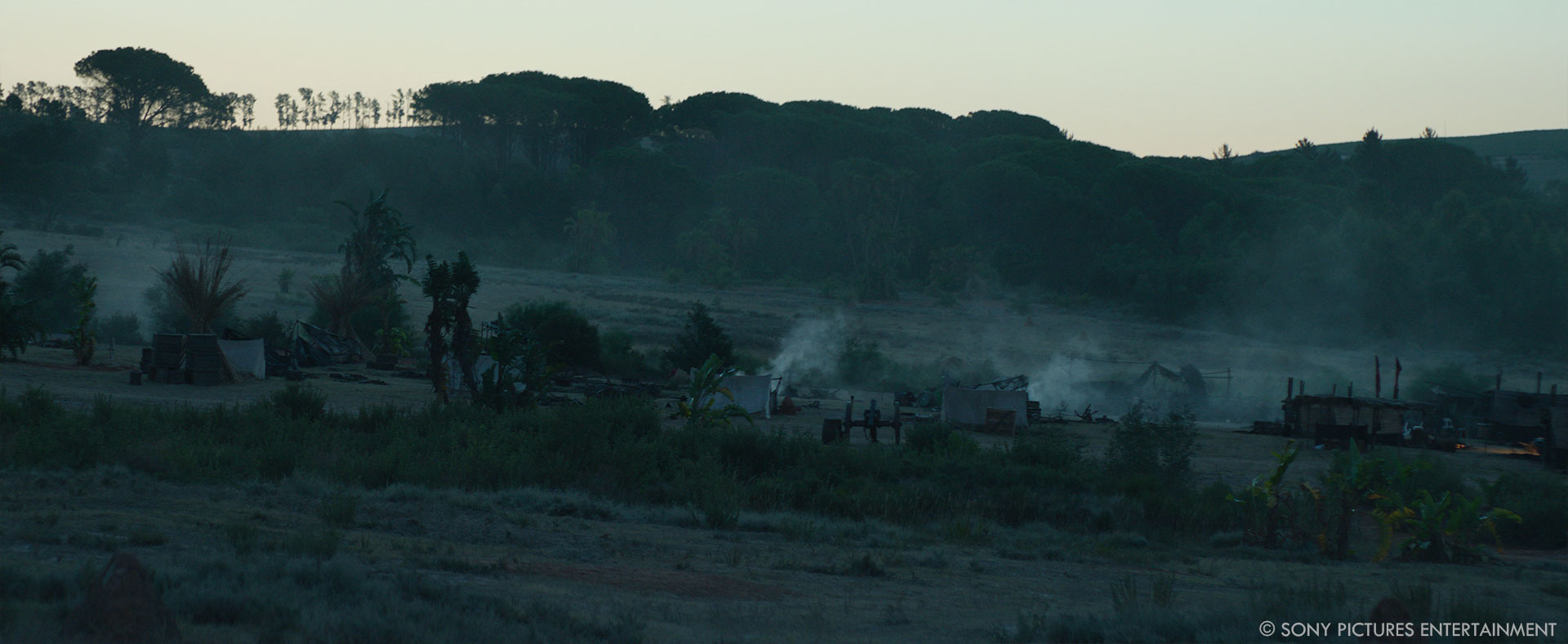
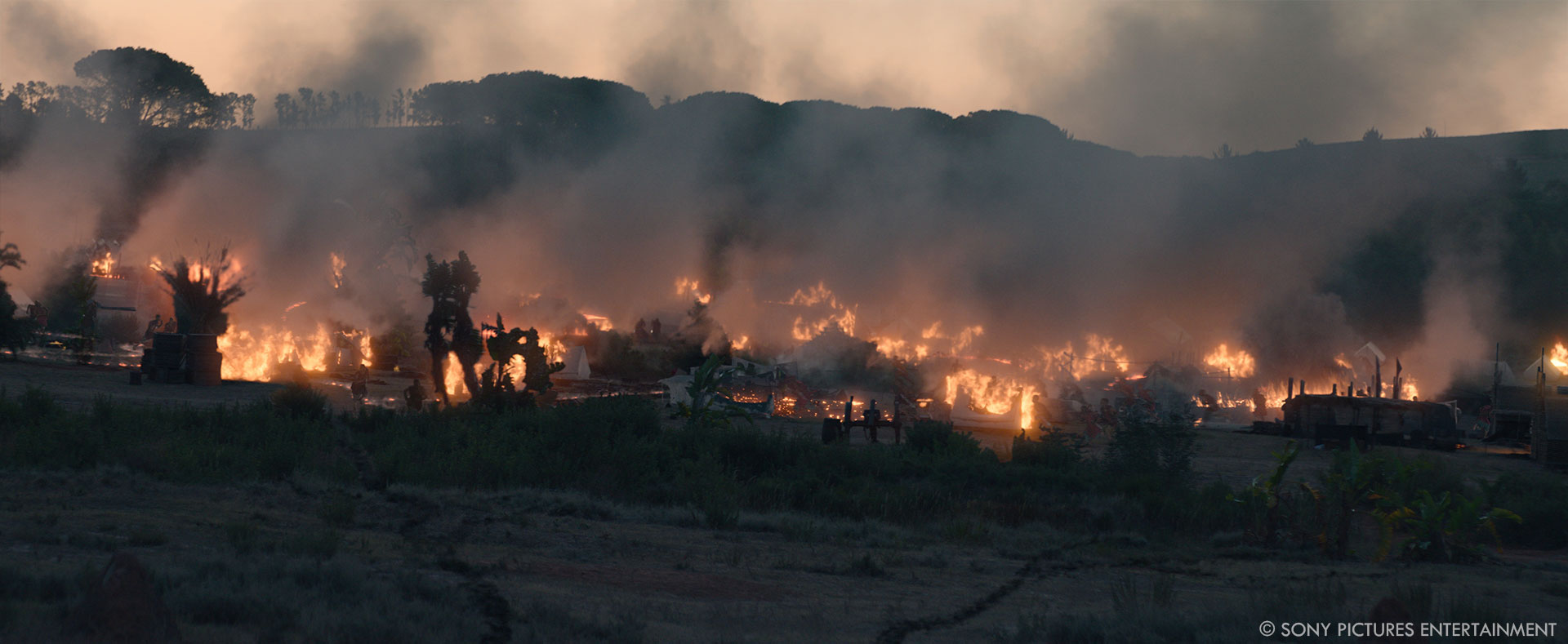
Can you tell us more about the massive fire?
Since the CG fire was a part of the general environment layout, the team at Milk decided to make it in a way that utilises similar kinds of workflows. The idea was that we create separate CG fire elements for each of the main camp elements, like the tents and huts, by firstly doing a burning geometry cloth simulation followed by a pyro and smoke simulation inside Houdini. The simulations were done in the origin and were later placed on top of the existing environment layout using USD inside Houdini.
How did you work with the SFX and stunt teams?
We worked closely with the SFX team led by Cordell McQueen, this was crucial in terms of where and how we used practical fire and smoke which was important for the look of the scenes and what we did in VFX due to weather in addition to health and safety conditions. For example, we shot a big scene within Cape Town Castle and for obvious reasons we couldn’t set fire to large practical builds within the courtyard with the risk of burning down protected buildings, so we shot what was safe practically for performance, lighting and the look overall and added the VFX in post using practical shot elements we gathered from SFX at the end of the shoot.
On the stunt side – most scenes had storyboards with the exception of the battle sequences, which relied upon stunt previs. The stunt team was led by Danny Hernandez, who we’d worked with on The Old Guard; he has this incredible energy on set which is very infectious. We were all ready to dive in and join the battle scenes with our cast! We did some previs and concept work for visual effects to help plan some scenes ahead of the shoot, these included previs for that jaw-dropping moment when Nawi (Thuso Mbedu) and Nanisca (Viola Davis) jump from the fort wall.
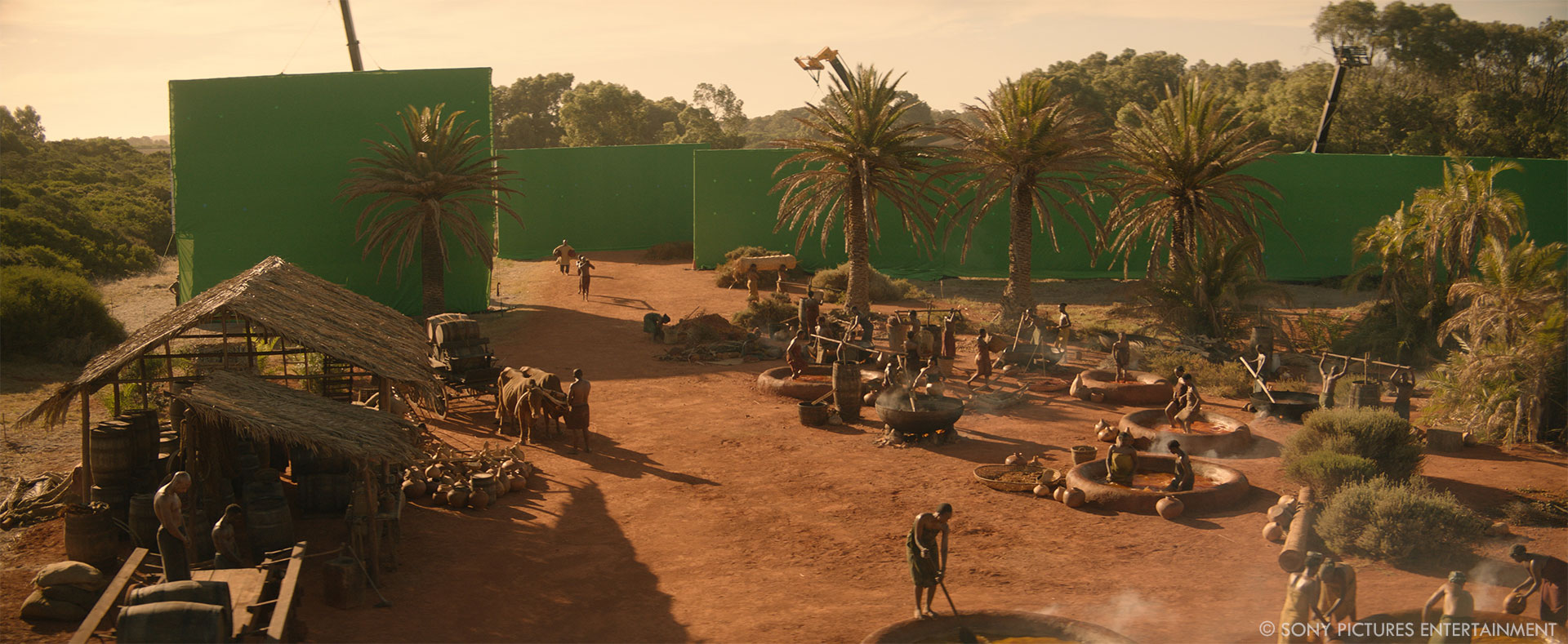
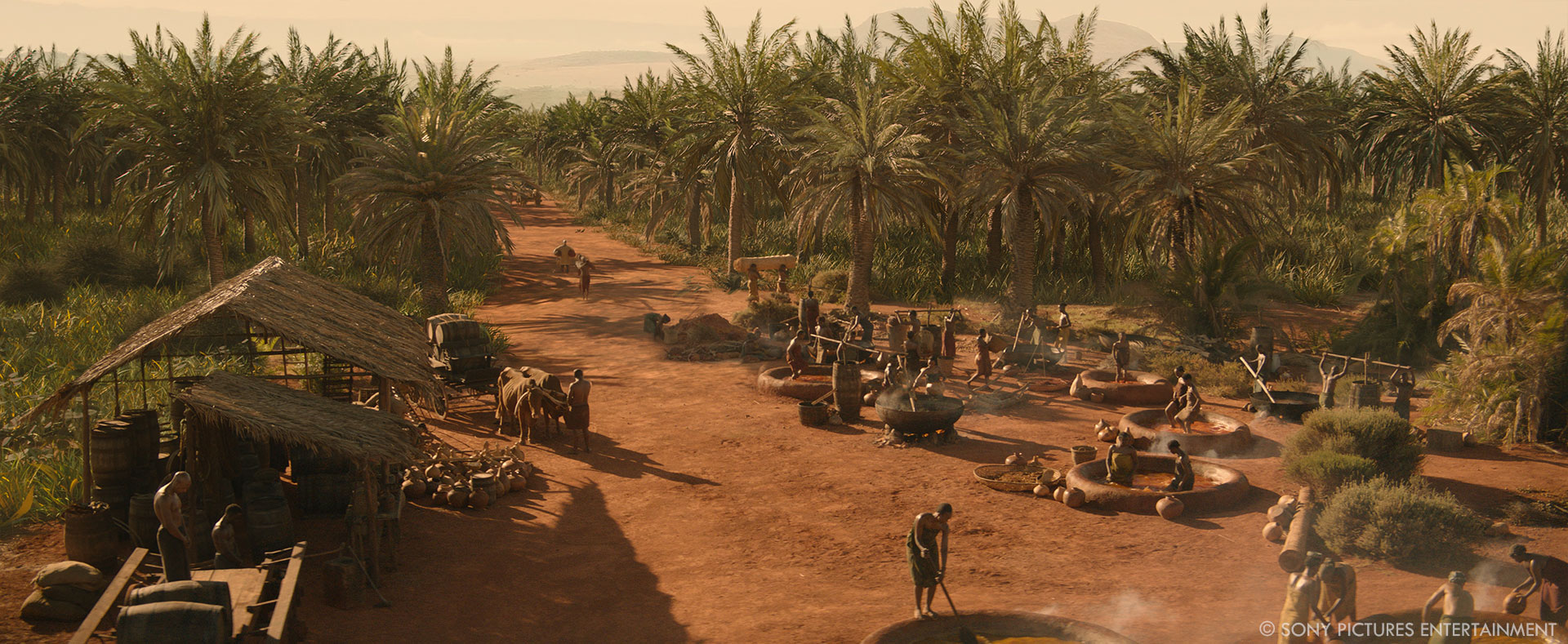
Which stunt was the most complicated to enhance?
Nawi and Nanisca’s dramatic jump from the fort wall for sure – we only had one specific day to shoot this as the location was at a public swimming pool. Unfortunately, due to the winds in Cape Town we couldn’t put up the blue screens that our actresses were intended to jump against so we had to roto them off a very detailed plate.
Can you tell us more about the crowd creation and animation?
Digital doubles were produced for the Oyo battle for any wide and mid shots to sell the panic and scope of the large Oyo army. We scanned many of the extras, working with a team from Clear Angle and then Milk VFX created our digital double army for the final battle.
Which sequence or shot was the most challenging?
The Oyo battle scene for sure as described above.
Is there something specific that gives you some really short nights?
Time was definitely the biggest challenge on this, We created around 800 visual effects shots over a tight period of 26 weeks. A lot of work to do in a very short amount of time!
What is your favourite shot or sequence?
I really like the choreography of the big Oyo battle scenes from the charging armies through to the additional fire and smoke effects. We did a lot of work on making sure we had absolute continuity of fire/smoke throughout the scene.
What is your best memory on this show?
Shooting in beautiful South Africa, we shot in some great locations.
How long have you worked on this show?
Around 14 months as I came on early ahead of prep to help with budgeting.
What’s the VFX shots count?
Around 800 VFX shots.
What is your next project?
Unfortunately, I can’t say at this stage but I’m really looking forward to diving into it.
A big thanks for your time.
// The Woman King – VFX Breakdown – Milk VFX
WANT TO KNOW MORE?
Milk VFX: Dedicated page about The Woman King on Milk VFX website.
© Vincent Frei – The Art of VFX – 2022




